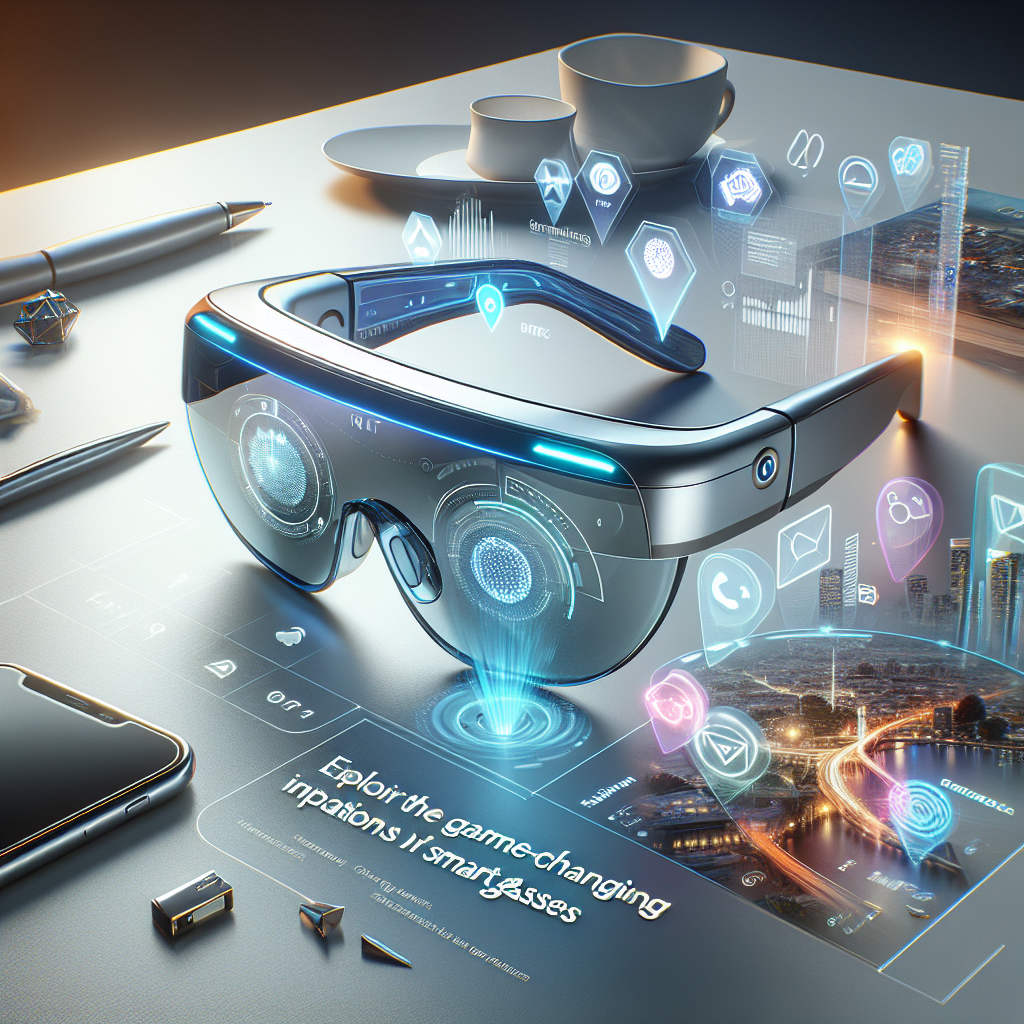The world of technology is constantly evolving, with new innovations and advancements shaping the way we interact with our surroundings. One such innovation that has garnered significant attention in recent years is augmented reality (AR) in smart glasses. This technology has the potential to revolutionize the way we live, work, and play, offering a range of game-changing implications that can enhance our daily lives in ways we never thought possible.
AR in smart glasses refers to the integration of augmented reality technology into wearable devices such as glasses or headsets. These devices overlay digital information onto the user’s view of the real world, creating a mixed reality experience that combines virtual elements with the physical environment. This technology has the potential to unlock a world of possibilities across various industries, from entertainment and gaming to healthcare, manufacturing, and beyond.
One of the key implications of AR in smart glasses is its potential to enhance our day-to-day experiences in a variety of ways. For example, in the field of entertainment, AR glasses could transform the way we consume media by overlaying digital content onto our physical surroundings. Imagine watching a movie or playing a video game where characters and objects appear to interact with the real world around you, creating a truly immersive experience unlike anything we have seen before.
In the world of healthcare, AR glasses have the potential to revolutionize how medical professionals work. Surgeons could use AR glasses to overlay vital patient information, such as real-time images from medical scans or diagnostic data, directly onto their field of view during surgical procedures. This could help improve accuracy, efficiency, and patient outcomes by providing surgeons with the information they need right at their fingertips.
In the manufacturing industry, AR glasses could streamline production processes by providing workers with real-time information and instructions directly in their line of sight. Workers could receive step-by-step guidance on assembly or maintenance tasks, reducing errors and improving efficiency on the factory floor. This could have a significant impact on productivity and quality control, leading to cost savings and increased competitiveness for businesses.
Another game-changing implication of AR in smart glasses is its potential to revolutionize the way we interact with our surroundings in everyday life. For example, AR glasses could provide users with personalized information and recommendations based on their location and preferences. From navigation and tourism to shopping and dining, AR glasses could enhance the way we discover and engage with the world around us, making our experiences more convenient, personalized, and immersive.
Despite the potential benefits of AR in smart glasses, there are still challenges that need to be addressed before this technology can reach its full potential. One of the main challenges is user adoption and acceptance. While AR glasses offer a wide range of benefits, some users may be hesitant to embrace this technology due to concerns about privacy, security, and social acceptance. Overcoming these barriers will be crucial for the widespread adoption of AR glasses in the future.
Another challenge is the development of AR content and applications that are compelling, engaging, and user-friendly. Creating high-quality AR experiences requires a combination of innovative technology, creative content, and seamless integration with the real world. Companies and developers will need to invest in research, design, and testing to ensure that AR applications are both functional and enjoyable for users.
In addition, the technical limitations of current AR glasses, such as battery life, processing power, and display quality, present obstacles that need to be overcome for this technology to reach its full potential. Advancements in hardware and software will be necessary to address these limitations and enhance the user experience of AR glasses across a wide range of applications and industries.
Despite these challenges, the game-changing implications of AR in smart glasses are too significant to ignore. As this technology continues to evolve and mature, we can expect to see exciting new developments that shape the way we live, work, and play in the years to come. From entertainment and healthcare to manufacturing and everyday life, AR glasses have the potential to revolutionize our world in ways we have only begun to imagine.
FAQs:
Q: What are some popular AR glasses on the market today?
A: Some popular AR glasses currently available include the Microsoft HoloLens, Magic Leap One, and Google Glass Enterprise Edition.
Q: How do AR glasses work?
A: AR glasses use sensors, cameras, and display technology to overlay digital content onto the user’s view of the real world, creating a mixed reality experience.
Q: Are AR glasses safe for long-term use?
A: While AR glasses are generally considered safe, users should take regular breaks to prevent eye strain and fatigue from prolonged use.
Q: How can AR glasses benefit businesses?
A: AR glasses can improve productivity, efficiency, and quality control in industries such as manufacturing, healthcare, and retail by providing workers with real-time information and instructions.
Q: What is the future of AR in smart glasses?
A: The future of AR in smart glasses is bright, with ongoing advancements in technology and applications expected to unlock new possibilities across various industries and sectors.
